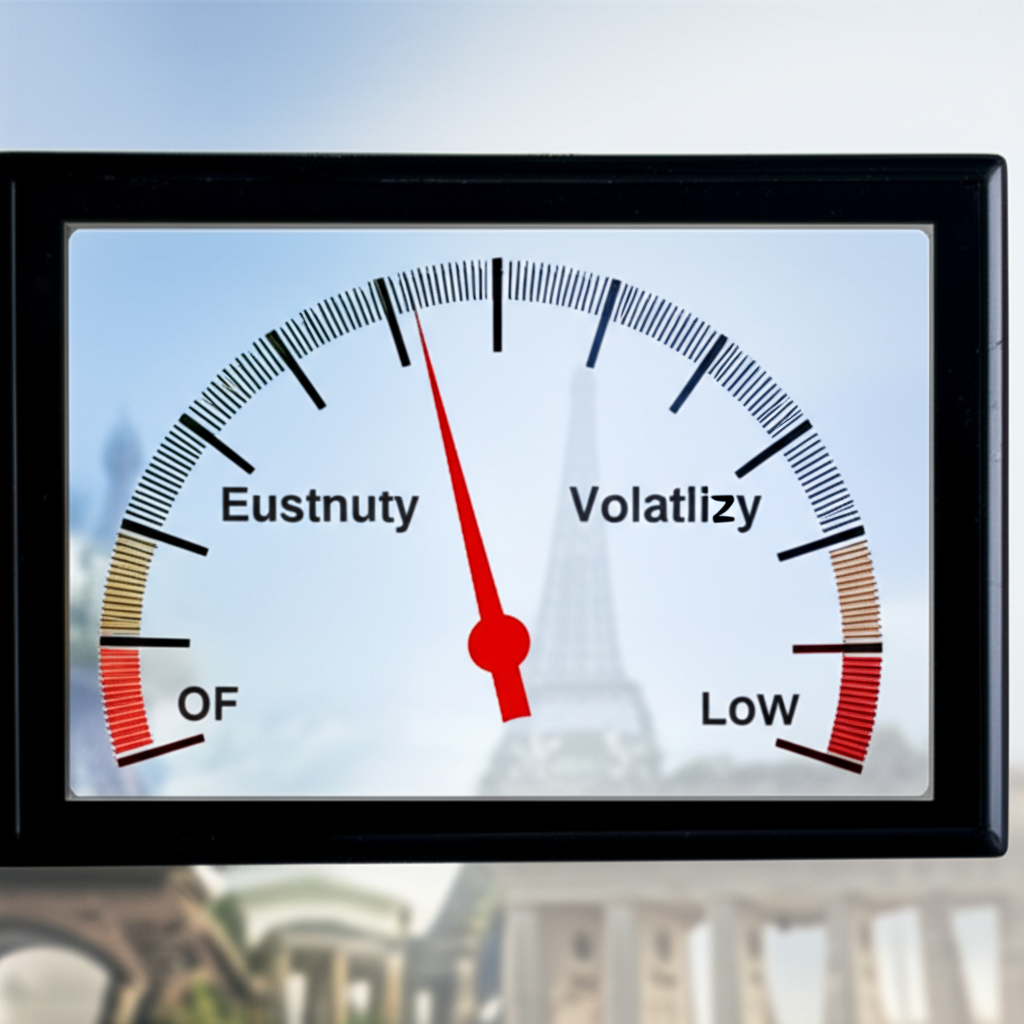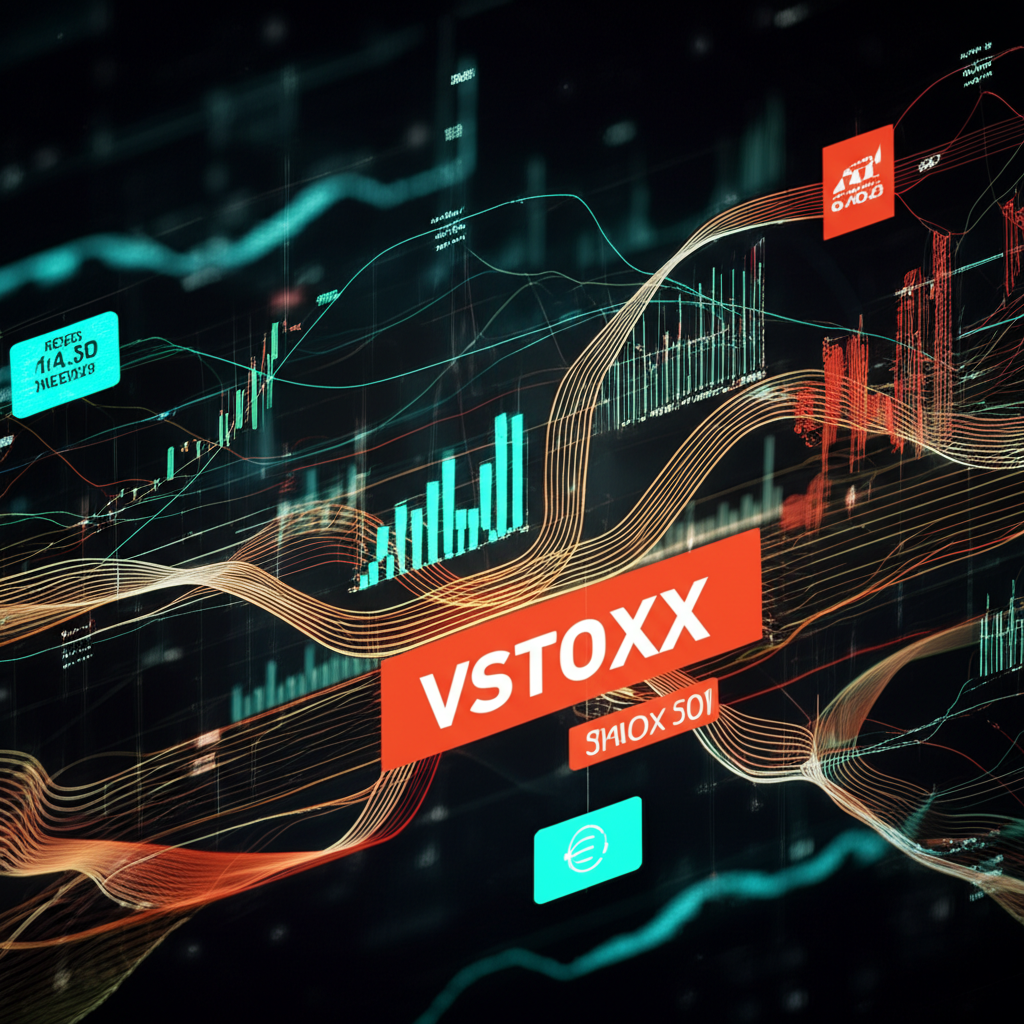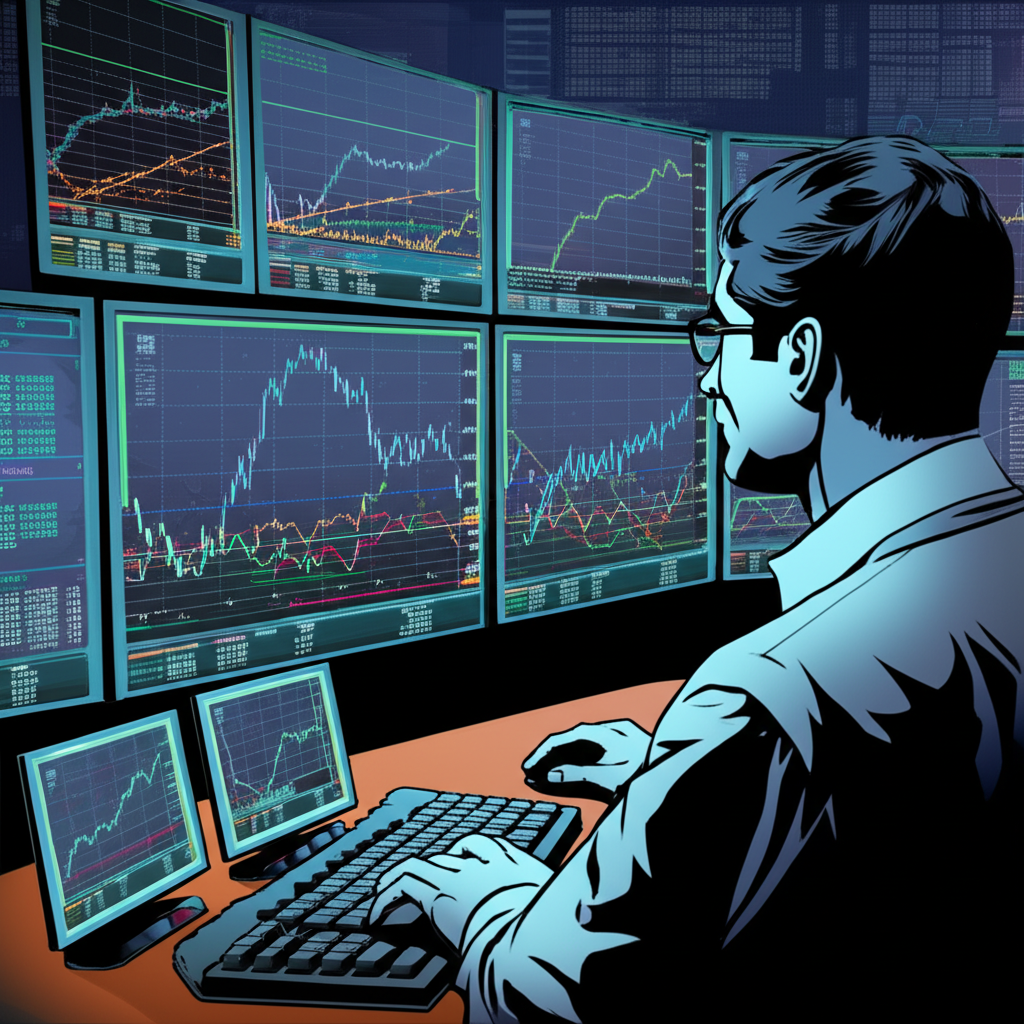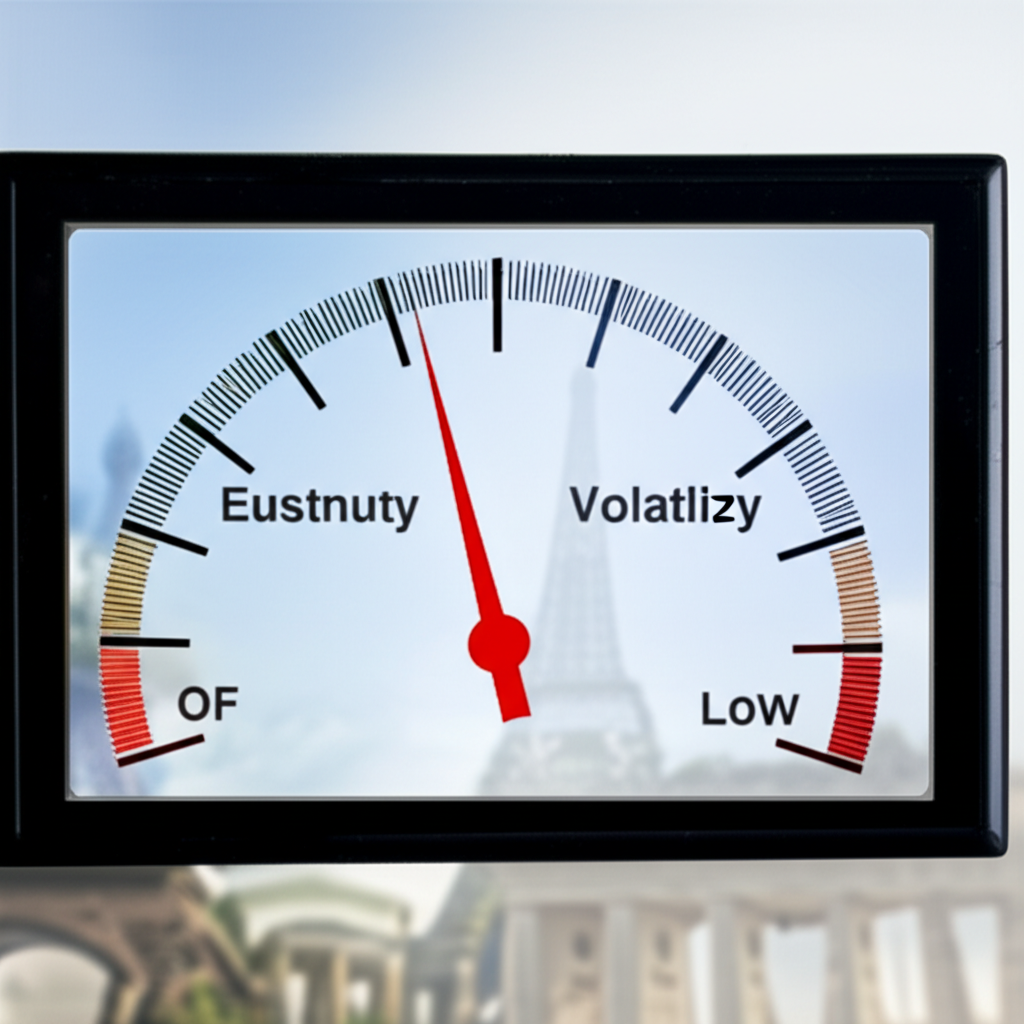Introduction to VSTOXX: Europe’s Volatility Barometer

In the complex world of financial markets, certain indicators serve as vital pulse checks for investor psychology and anticipated market turbulence. Among these, the VSTOXX index stands out as Europe’s primary gauge of expected volatility. Commonly known as “VIX Europe,” this forward-looking metric reflects the level of uncertainty embedded in the options markets tied to the Euro Stoxx 50—the benchmark index for leading blue-chip companies across the Eurozone. Unlike traditional price indices, VSTOXX doesn’t track stock performance directly; instead, it reveals what traders collectively expect about future price swings over the coming weeks. For portfolio managers, institutional investors, and active traders, monitoring VSTOXX offers a strategic advantage, acting as an early warning system for shifts in market sentiment, whether driven by economic data, policy surprises, or geopolitical upheavals.
What is VSTOXX (VIX Europe)? Unpacking the Index

Understanding the VSTOXX index is essential for anyone analyzing or investing in European equities. Far more than a simple number, it encapsulates the market’s collective anticipation of near-term volatility, derived from real-time pricing in derivatives markets. Its construction mirrors the methodology of the well-known U.S. VIX, but with a distinctly European focus, making it indispensable for assessing regional risk dynamics.
The Origins and Significance of VSTOXX
Launched to meet the growing demand for a transparent and reliable measure of Eurozone market risk, the VSTOXX—officially the SToxx 50 Volatility Index—was developed as the European counterpart to the CBOE Volatility Index (VIX). It specifically measures the implied volatility of options on the Euro Stoxx 50 index, which includes major corporations from countries like Germany, France, Italy, and the Netherlands. Because these firms represent a significant portion of the Eurozone’s market capitalization, their options activity provides a high-resolution view of investor sentiment. When VSTOXX climbs, it signals rising anxiety—often ahead of or during periods of market stress, such as sovereign debt crises or political instability. Conversely, when the index declines, it reflects growing confidence and a reduced expectation of sharp market moves. In this way, VSTOXX functions as a real-time sentiment thermometer for European capital markets.
How VSTOXX is Calculated: Methodology and Components
The computation of VSTOXX follows a rigorous, rules-based approach designed to capture the market’s forward-looking volatility expectations with precision. It aggregates the prices of both call and put options on the Euro Stoxx 50, focusing on out-of-the-money contracts with maturities between 8 and 22 days. These options are weighted based on their strike prices and time to expiration, resulting in a single composite figure that represents the annualized implied volatility over the next 30 days. The methodology ensures that the index reflects a broad consensus rather than being skewed by a few outlier trades. At its core, the calculation leverages the principle that option premiums increase when traders expect larger price swings. Therefore, higher demand for protection—reflected in elevated option prices—translates into a higher VSTOXX reading, indicating a market bracing for turbulence.
VSTOXX Live Data, Charts, and Historical Performance

Accessing and interpreting VSTOXX data is a critical skill for market analysts and investors seeking to anticipate shifts in European equity behavior. Real-time readings and long-term trends provide actionable insights, helping users differentiate between temporary noise and sustained changes in market risk appetite.
Tracking VSTOXX Live: Where to Find Real-time Data
For up-to-the-minute VSTOXX values, traders and analysts often turn to official exchange platforms such as Eurex, where VSTOXX futures and options are actively traded. This direct access ensures accuracy and minimal latency. Additionally, leading financial data services—including Bloomberg, Reuters, Investing.com, and TradingView—offer real-time quotes, interactive charts, and customizable alerts. When reviewing live data, it’s important to consider not just the current level but also the trend, momentum, and historical context. A sudden spike may indicate a reaction to breaking news, while a gradual rise could reflect building unease over economic conditions. Comparing the current value to its long-term average (often around 15–20) helps assess whether volatility is elevated or subdued relative to normal market conditions.
Analyzing VSTOXX Historical Data and Trends
Historical analysis of VSTOXX reveals clear patterns linked to major economic and political events in Europe. For instance, during the height of the Eurozone debt crisis in 2011–2012, the index surged past 40, reflecting deep concerns about the viability of the euro and the solvency of several member states. Similarly, the Brexit referendum in 2016 triggered a sharp jump in VSTOXX as markets grappled with the implications of the UK’s potential exit. More recently, the outbreak of war in Ukraine in 2022 sent the index soaring due to fears over energy supply disruptions and broader geopolitical instability. On the other hand, periods of strong economic growth, accommodative monetary policy, and political stability—such as the mid-2010s recovery phase—were marked by sustained low VSTOXX readings. By studying these patterns, investors can better interpret current volatility levels and anticipate how markets might react to future shocks.
VSTOXX vs. US VIX: A Comprehensive Comparison

While both VSTOXX and the US VIX serve as key volatility gauges, they reflect different market environments and respond to distinct catalysts. Understanding their similarities and differences is crucial for global investors managing cross-border exposures.
Key Similarities and Differences in Calculation and Market Coverage
At a methodological level, VSTOXX and the US VIX share a common foundation. Both use the prices of out-of-the-money options on a major equity index to calculate a 30-day implied volatility figure. The underlying principle—that options prices encode expectations about future price swings—is identical. However, the indices track different markets: the US VIX is based on the S&P 500, capturing sentiment in the world’s largest equity market, while VSTOXX is anchored to the Euro Stoxx 50, representing the Eurozone’s largest companies. This means VSTOXX is more sensitive to events like ECB meetings, German industrial output, or Italian bond yields, whereas the VIX reacts more strongly to Federal Reserve decisions, U.S. employment data, or corporate earnings from American tech giants. Despite their structural similarities, these regional distinctions mean the two indices can diverge significantly under certain conditions.
Understanding Their Divergence and Correlation
Although VSTOXX and the VIX often move in tandem—especially during global crises like the 2008 financial meltdown or the 2020 pandemic—their correlation is not perfect. Regional developments can cause one to spike while the other remains stable. For example, political turmoil in France during national elections or a banking crisis in Germany could send VSTOXX higher without significantly affecting the U.S. VIX. Conversely, a sudden shift in Fed policy or a sharp move in U.S. Treasury yields might drive the VIX up while European markets remain relatively calm. This divergence underscores the importance of monitoring both indices separately, particularly for investors with exposure to multiple regions. It also highlights the value of using VSTOXX as a dedicated tool for assessing European-specific risk, rather than relying solely on global volatility proxies.
Factors Influencing European Volatility and VSTOXX Movements
VSTOXX is highly responsive to a wide array of economic, political, and global forces. Its fluctuations are not random but are driven by concrete events and policy shifts that shape investor expectations.
Economic Indicators and Central Bank Policies
Macroeconomic data from the Eurozone plays a pivotal role in shaping VSTOXX levels. Strong GDP growth, falling unemployment, and stable inflation typically support market confidence, leading to lower volatility. Conversely, weak industrial production, rising jobless claims, or unexpected inflation spikes can trigger uncertainty, pushing the index higher. The European Central Bank (ECB) is perhaps the single most influential actor. Its interest rate decisions, asset purchase programs, and forward guidance directly impact market expectations. A surprise rate hike or a shift toward policy tightening can increase uncertainty about future economic conditions, causing VSTOXX to rise. Similarly, the ECB’s communication style—whether hawkish or dovish—can sway market sentiment even in the absence of immediate policy changes.
Geopolitical Events and Market Sentiment
Europe’s intricate political landscape makes it particularly vulnerable to volatility from non-economic sources. National elections in major economies like Germany or France, referendums on EU integration, or coalition collapses can all introduce uncertainty. The 2015 Greek debt crisis, for example, caused VSTOXX to spike as markets feared a potential Grexit and its ripple effects across the euro. More recently, political instability in Italy and energy disruptions linked to the war in Ukraine have repeatedly driven volatility higher. These events reinforce VSTOXX’s role as a “fear index,” capturing the market’s anxiety during times of institutional or geopolitical stress. The index often rises not because of actual economic damage, but because of the uncertainty surrounding potential outcomes.
Commodity Prices and Global Spillovers
Although focused on European equities, VSTOXX is not immune to global influences. Europe’s reliance on imported energy means that sharp movements in oil and natural gas prices can have broad economic consequences. A sudden spike in energy costs can fuel inflation, squeeze corporate margins, and dampen consumer spending—all of which increase market uncertainty and push VSTOXX upward. Additionally, financial shocks originating elsewhere—such as a market crash in China, a debt crisis in a major emerging market, or instability in the U.S. banking sector—can create spillover effects. These events may lead to a broad-based flight to safety or a surge in risk aversion, which quickly spreads to European markets and lifts VSTOXX, even in the absence of local triggers.
Trading and Investing with VSTOXX: Strategies and Instruments
VSTOXX is not just an analytical tool—it also serves as the basis for a range of financial products that enable investors to manage risk or express views on market volatility.
Understanding VSTOXX Derivatives: Futures and Options
While the VSTOXX index itself cannot be traded directly, investors can gain exposure through derivatives listed on exchanges like Eurex. These instruments are widely used for both hedging and speculation.
* **VSTOXX Futures:** These standardized contracts allow traders to take positions on the future level of the index. Buying futures is a bet on rising volatility, while selling them reflects an expectation of calmer markets. They are commonly used by institutions to hedge equity portfolios or by traders anticipating short-term market stress.
* **VSTOXX Options:** These provide more flexibility than futures, allowing investors to buy call options to profit from rising volatility or put options to benefit from a decline. Because options require paying a premium, they offer defined risk, but time decay can erode their value if volatility remains low. These tools are especially popular around major economic announcements or political events when volatility is expected to spike.
VSTOXX CFDs and Other Related Products
For retail investors, access to VSTOXX exposure often comes through Contracts for Difference (CFDs) offered by online brokers. CFDs allow traders to speculate on the index’s price movements without owning any underlying asset, and they frequently offer high leverage. However, this leverage amplifies both gains and losses, making CFDs particularly risky. Some investors may also encounter Exchange Traded Products (ETPs) linked to European volatility, such as ETFs or ETNs. These products are less common than their U.S. counterparts and often face structural challenges, including roll yield losses in contangoed futures markets. As such, they require careful evaluation of their tracking methodology and cost structure before investment.
Strategic Applications: Hedging, Speculation, and Portfolio Diversification
VSTOXX-based instruments offer several strategic advantages:
* **Hedging:** Investors with large European equity holdings can use VSTOXX futures or call options to protect against market downturns. When equities fall and volatility spikes, gains in long volatility positions can offset portfolio losses, effectively acting as insurance.
* **Speculation:** Traders who anticipate heightened market stress—due to an upcoming election, central bank meeting, or geopolitical flare-up—can use derivatives to profit from expected increases in VSTOXX.
* **Portfolio Diversification:** Volatility indices like VSTOXX often exhibit negative correlation with equities, particularly during crises. Allocating a small portion of a portfolio to volatility-linked assets can improve risk-adjusted returns by providing a hedge during turbulent periods. However, due to the persistent contango in volatility futures, long-term holding of these positions can erode returns, requiring active management.
Common Misconceptions About European Volatility
Despite its widespread use, VSTOXX is sometimes misinterpreted, leading to flawed investment decisions. Clarifying these misunderstandings is key to using the index effectively.
One frequent error is assuming that a rising VSTOXX predicts a falling stock market. While the two often move inversely, VSTOXX measures the expected *size* of price moves, not their *direction*. Markets can experience high volatility while rising, though this is less common. Another misconception is that VSTOXX and the U.S. VIX always move in sync. In reality, regional factors frequently cause divergence, making it unwise to substitute one for the other. Additionally, some investors treat a low VSTOXX as a sign of permanent stability. However, prolonged periods of low volatility can breed complacency and increase the risk of a sudden, sharp spike if an unexpected event occurs. Finally, while VSTOXX reflects market expectations, it is not a predictive tool—it captures sentiment, not certainty.
Conclusion: The Enduring Importance of VSTOXX in European Markets
The VSTOXX index remains a cornerstone of European financial analysis, offering a real-time window into the market’s expectations for future volatility. As a forward-looking indicator rooted in options pricing, it responds dynamically to economic data, central bank actions, geopolitical risks, and global market shifts. While it shares conceptual similarities with the U.S. VIX, its focus on the Euro Stoxx 50 gives it a unique role in assessing regional sentiment and risk. For investors, understanding how to interpret VSTOXX—both in real time and over historical cycles—is essential for making informed decisions. Whether used for hedging, speculation, or portfolio diversification, VSTOXX provides a powerful lens through which to navigate the complexities of European markets. By recognizing its limitations and avoiding common misinterpretations, market participants can harness its insights to enhance strategic resilience and adapt to changing conditions with greater confidence.
Frequently Asked Questions about VIX Europe
Is there a specific VIX index that tracks European market volatility?
Yes, the primary index that tracks European market volatility is the VSTOXX index, often referred to as “VIX Europe.” It measures the implied volatility of options on the Euro Stoxx 50 index.
What is the main difference between the VSTOXX and the CBOE VIX?
The main difference lies in their underlying indices. The VSTOXX tracks the implied volatility of options on the Euro Stoxx 50 (Europe’s blue-chip index), while the CBOE VIX tracks the implied volatility of options on the S&P 500 (the broad U.S. equity market). This means they reflect sentiment in different geographical markets.
How does the VSTOXX index reflect market sentiment in Europe?
VSTOXX reflects market sentiment by measuring the implied volatility derived from Euro Stoxx 50 options prices. A higher VSTOXX value indicates that options traders expect larger price swings in the future, suggesting increased fear or uncertainty. Conversely, a lower VSTOXX suggests market complacency and an expectation of calmer conditions.
Can individual investors directly buy or sell the VSTOXX index?
No, the VSTOXX index itself is a calculated value and cannot be directly bought or sold. However, individual investors can gain exposure to VSTOXX movements through financial instruments such as VSTOXX futures and options, or potentially through CFDs offered by brokers.
What are the primary factors that cause the VSTOXX to rise or fall?
Key factors include:
- Economic indicators: Eurozone GDP, inflation, unemployment data.
- Central Bank policies: Decisions and statements from the European Central Bank (ECB).
- Geopolitical events: Elections, referendums, cross-border tensions, and global crises affecting Europe.
- Market sentiment: General investor confidence or fear regarding the European economic outlook.
- Global market spillovers: Major events in other regions impacting European markets.
Are VSTOXX options considered European-style or American-style options?
VSTOXX options, like most index options traded in Europe, are typically European-style options. This means they can only be exercised on their expiration date, unlike American-style options which can be exercised any time before expiration.
Where can I find reliable real-time and historical data for the VSTOXX?
You can find reliable real-time and historical data for VSTOXX on official exchange websites like Eurex, and reputable financial data providers such as Bloomberg, Reuters, Investing.com, and TradingView.
How can VSTOXX be used as a hedging tool in a diversified portfolio?
VSTOXX can be used as a hedging tool by taking a long position in VSTOXX futures or buying VSTOXX call options. Since VSTOXX often moves inversely to equity markets during downturns, these positions can help offset potential losses in a European equity portfolio, acting as a form of portfolio insurance.
Is the VIX (US) the only global volatility index, or are there others?
The VIX (US) is not the only global volatility index. While it is the most well-known, many other regions and markets have their own volatility indices, such as VSTOXX for Europe, NIKKEI VIX for Japan, and various indices for other major economies, each tracking their respective underlying markets.
What are the risks associated with trading VSTOXX futures or options?
Trading VSTOXX futures and options carries significant risks, including:
- Leverage risk: Small price movements can lead to large gains or losses.
- Volatility risk: Volatility indices can be highly volatile themselves.
- Time decay: Options lose value as they approach expiration.
- Contango/Backwardation: The structure of futures curves can impact profitability for long-term positions.
- Market risk: Unexpected events can cause rapid, unpredictable price swings.
These instruments are complex and best suited for experienced investors.

留言